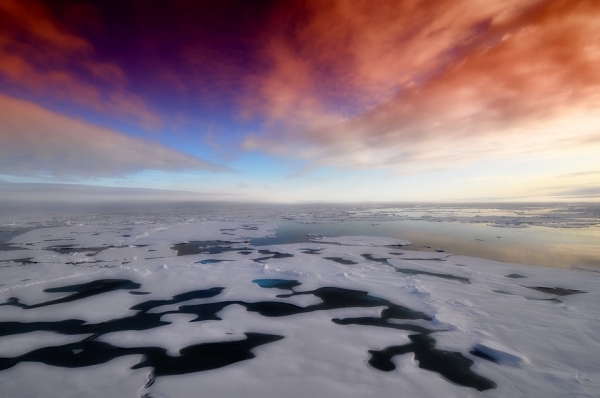As sea ice declines in the Arctic, bowhead whales are staying north of the Bering Strait more frequently, a shift that could affect the long-term health of the bowhead population and impact the Indigenous communities that rely on the whales, a new study by Oregon State University researchers shows.
Bowhead whales found in the Pacific Arctic, sometimes called Bering-Chukchi-Beaufort bowheads based on their migratory patterns, normally winter in the northern Bering Sea and migrate north in the spring through the Bering Strait to the Canadian Beaufort Sea, where they spend summer and fall. They then migrate south again through the Strait for the winter.
The migration essentially follows the sea ice south through the Bering Strait, which would close up as ice formed in the Chukchi Sea. But warming temperatures in the Arctic over the past decade have led to sea ice decline and kept the Bering Strait open increasingly into the winter months, said the study’s lead author, Angela Szesciorka, a research associate with Oregon State’s Marine Mammal Institute.
“The lack of ice means they are losing this critical habitat, and as a result, we’re seeing that these whales are not leaving the Arctic anymore for the winter,” Szesciorka said. “Without that ice, there could be changes in bowhead availability for the Indigenous people who rely on the whales. The lack of ice also opens the door for other species to move into the Arctic, resulting in competition for resources, potential predation and increased human interaction due to ship strikes or entanglement in fishing gear.”
Read more at Oregon State University
Photo Credit: 12019 via Pixabay


